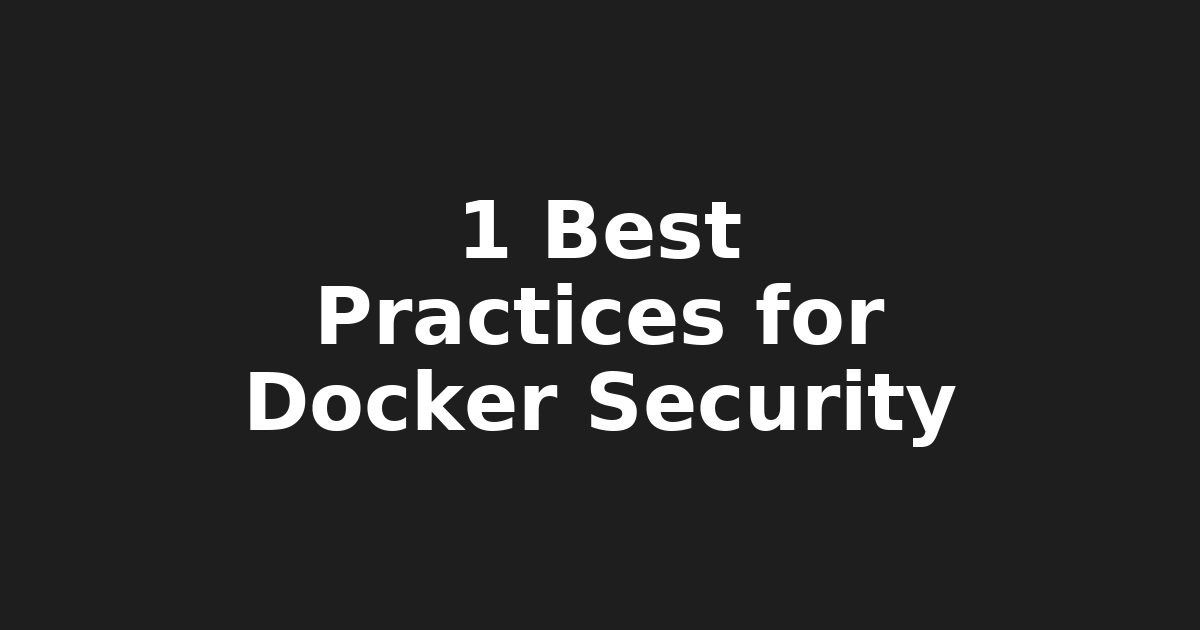1. "Securing Docker Containers: Best Practices for DevOps" (47 chars)

Securing Docker Containers: A Guide for Developers and System Administrators (by Josh from KeepItTechie)
Hey there tech enthusiasts! It's your friendly neighborhood Linux educator, Josh from KeepItTechie, here to help you navigate the ever-evolving world of DevOps. Today, we're diving into a topic that's been causing quite a stir: securing those popular Docker containers!
Docker containers have revolutionized the way we containerize applications, but with great power comes great responsibility. Understanding best practices for securing these containers is crucial for developers, system administrators, and IT professionals alike. Let's dive in!
Securing Docker Containers 🔒
Limit Container Privileges 👤
First things first: don't give your containers root access! Instead, create a dedicated user for each container with the least privileges necessary to perform its functions. This principle, known as Principle of Least Privilege, is key to maintaining security in your Docker environment.
Keep Things Updated 📅
Just like keeping your Linux distro up-to-date, it's essential to keep your Docker images and runtimes updated as well. Regularly updating your containers helps protect against known vulnerabilities that could be exploited by malicious actors.
Use Secrets and Environment Variables 🔐
Avoid storing sensitive information like API keys or database credentials within your container. Instead, use secrets or environment variables to keep such data out of your source code and Dockerfiles.
Network Security 🌐
Implement a strong network security strategy for your containers. Use Docker networks to isolate containers, and consider using a reverse proxy for added protection.
Monitor Your Containers 🕵️♂️
Regularly monitor your containers to identify any suspicious activity early on. Tools like Docker Bench for Security can help ensure your Docker environment is secure and compliant with industry best practices.
Linux Kernel 5.16: New Security Features for System Administrators 🌐
As a system administrator, staying informed about the latest kernel updates is crucial to maintaining a secure infrastructure. With the release of Linux Kernel 5.16, there are some exciting new security features to keep an eye on. Read more here
Top Vulnerabilities to Watch Out for in 2022 🔒
As we move into 2022, it's important for IT professionals to be aware of potential vulnerabilities that could impact their systems and networks. Keep an eye on the CVE Details page for updates on the most critical vulnerabilities of the year.
Cloud Security: Best Practices for AWS, Azure, and Google Cloud Platform 🌐
As businesses continue to adopt cloud services, understanding best practices for securing these platforms becomes essential for IT professionals. Check out our Cloud Security Guide for tips on protecting your data in the cloud.
Understanding Zero Trust Architecture: A Must-Have for Modern Cybersecurity 🔒
In today's interconnected world, it's essential to adopt a zero trust approach to cybersecurity. The Zero Trust Architecture (ZTA) assumes that breaches are inevitable and verifies every request as though it originates from an open network. Adopting ZTA can significantly improve your organization's security posture.
Motivational Tip 🚀
Remember, staying informed and up-to-date on the latest trends and best practices is key to maintaining a secure tech environment. Keep learning, keep adapting, and never stop questioning – that's how you stay one step ahead of cyber threats! Happy coding, sysadmins, developers, and IT pros! 🎉💻🚀
Stay techie, my friends! -Josh from KeepItTechie
🙋♂️ This post was brought to you by Josh from KeepItTechie — helping you break into tech, one command at a time.
